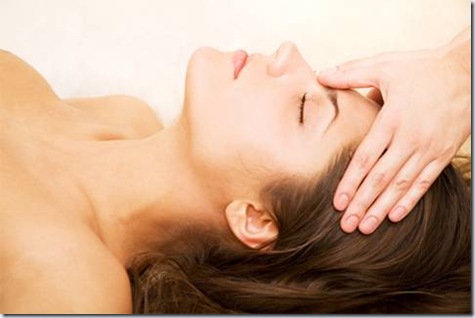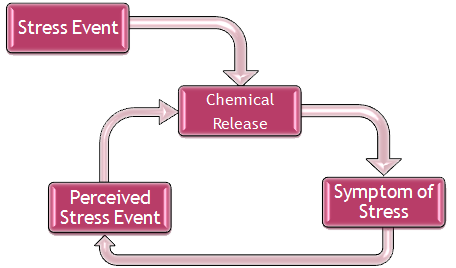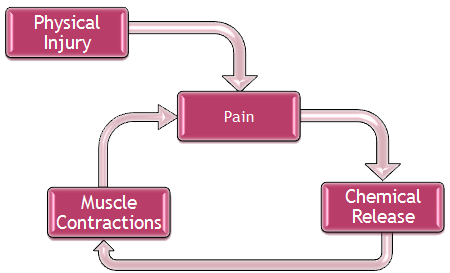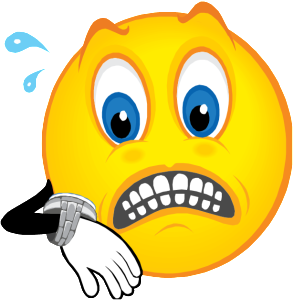Relaxation and Stress Reduction
Lisa Warner, LMT

Many people have said or heard someone say, “I’m so stressed out… I need a massage…”
Through experience, many people know that having a massage can reduce their stress and provide them both physical and mental relaxation, improving how they are able to perform during the day. As medical science continues to gain understand of “what” stress is and how it influences both the mind and body, “how” and “why” massage provides relief and actually reduces stress is becoming understood at the physiological level, where the science supports the experiences of so many people.
Stress Defined
There are many definitions and descriptions of stress and the definitions are often complicated by their reflection of individual’s personal experiences. Published definitions are even very broad, for example, Miriam Webster’s Dictionary defines stress as:
- a state of mental tension and worry caused by problems in your life, work, etc…
- something that causes strong feelings of worry or anxiety
- a physical, chemical, or emotional factor that causes bodily or mental tension and may be a factor in disease causation
- a state resulting a stress; especially on eof bodily or mental tension resulting from factors that tend to alter an existent equilibrium <job related stress>
Some other definitions simple state stress is just a reaction to our physical or mental equilibrium being disturbed. When discussing stress, another important topic stressors. Stressors are the cause of stress. They can be an events, emotions, environmental, psychological, etc… Essentially, anything that can cause stress is considered a stressor. Whatever you view as the definition of stress, a common theme to take away is:
Stress is part of our everyday lives. We can improve the quality of our lives by understanding stress and how to manage it.
Types of Stress and Stressors
Acute Stress
Acute stress is associated with short-term or immediate events and occurs due to real or perceived physical threats. Acute stress triggers the "Fight-or-Flight" response in people. In this case, a surge of hormones will move through the body impacting many of the bodies systems. Stressors that can cause acute stress are things such as loud or sudden noises, crowds, thrill rides, danger, etc… Acute stress and excitement are often connected, for example thrill rides like roller coasters can cause the excitement which can also be considered acute stress.
Chronic Stress
Chronic stress is associated with long-term events. Stressors include relationship issues, financial challenges, work pressures, loneliness, etc… In the case of acute stress, the body often goes back to its pre-stress state and relaxes automatically. On the other hand, the body does not automatically return to relaxation in the presence of chronic stress. As a result, chronic stress can have negative and long-term impacts on the body’s health.
Internal vs. External Stressors
Physical and psychological events such as illness, infection, fear, and worry are considered internal stressors. External stressors result from physical stimuli or stressful environments. Extreme temperature and pain are considered physical external stressors. High-pressure jobs, abuse, and being a victim of a crime are all things that can create stressful environments.
Bodies Response to Stress
Our bodies have their own natural, pre-programmed response to dealing with stress. This response is the body’s response to perceived threats, also known as the flight or fight response. This flight or fight response improves the body’s ability to think quickly and react when threatened. When you encounter real or perceived threats, your body reacts before you can even think about it. First, your brain sounds an alarm and sends a surge of hormones throughout your blood stream. These hormones include cortisol and adrenaline. Cortisol is the primary stress hormone of the body. It increases blood sugar, which your body uses for energy, for both your brain and muscles. It also directs your body to suppress nonessential processes like digestion, reproductive systems, and others. Adrenaline increases your heart rate and blood pressure and give them body more energy. As a result, your body has extra energy, you are more alert, and the chemical reactions help your brain control fear, mood, and your motivation. In times of crisis, these responses can result in short-term, improved performance and if fighting for your life, the flight or fight response can give you the added edge to survive. After the event, the body’s natural relaxation response activates, allowing the body to recover. The problem occurs when the body is constantly under stress and the relaxation response is not activated. The body is not designed to maintain “flight or fight” mode indefinitely, and as a result, health issues can occur. Some of these effects on the body are:
- Headaches
- Muscle Tension, including neck and back pain
- Chest Pain
- Fatigue
- Stomach and Intestinal Problems
- Sleep Problems
In addition, you can have mood and behavioral responses.
The Physical Cycle
As your brain interprets the symptoms of stress, it can respond to these symptoms as further reasons to increase its “flight or fight” responses, increasing the release of hormones, and further exasperating the symptoms of stress. This stress cycle looks like:

This general cycle of stress can continually build upon itself, resulting in a worsening of stress symptoms. For example, in the case of physical stress, such as an injury, the body will perceive pain. As a result, the brain will release hormones that will cause it to isolate that area of the body in an attempt to protect itself. This protective mechanism can result in muscle contractions. Muscle contractions are a way for the body to protect an injured area and can be called muscle guarding or splinting. The body’s self-protection mechanism can also lead to a lack of blood flow to the injured area, or ischemia. Ischemia is a local anemia that can result in the body perceiving more pain, and thus experiencing more stress and escalating this pain cycle. This cycle is illustrated here:

Here is where massage can play a critical role in reducing stress, and thus pain cycle. Proper massage techniques can reverse the effects of ischemia, thus reducing the amount of pain, which in turn reduces the body’s automated defense mechanisms. As a result, the pain is reduced, the amount of hormones released is reduced, and the stress reaction cycle is broken.

Massage is a tool that can help address the stress associated with the physical pain cycle, but also benefits the psychological pain cycle too. Many people, when they are under stress, experience physical manifestations of the stress such as tightening of the muscles in the upper back or neck. This physical manifestation triggers the physical stress cycle described above and will amplify the perceived stress events. As described above, massage can break this physical cycle, but can also help us relax, mentally, reducing our psychological stress as well. So massage can both help our bodies and minds break the cycles of stress, allowing us to be more comfortable and focused on the events of our day.
References
Tosch, Helen. “Relief within Reach: Massage and Stress.” Massage Therapy Journal Winter 2013: 66-74. Print.
Warner, Lisa. “Lisa Warner, LMT. Healing Touch Through Massage.” Therapist Introduction. West Palm Beach. Presentation.
Brown, Mary Beth and Simonson Stephanie. Introduction to Massage Therapy. Baltimore: Lippincott Williams and Wilkins, 2004. Print.




